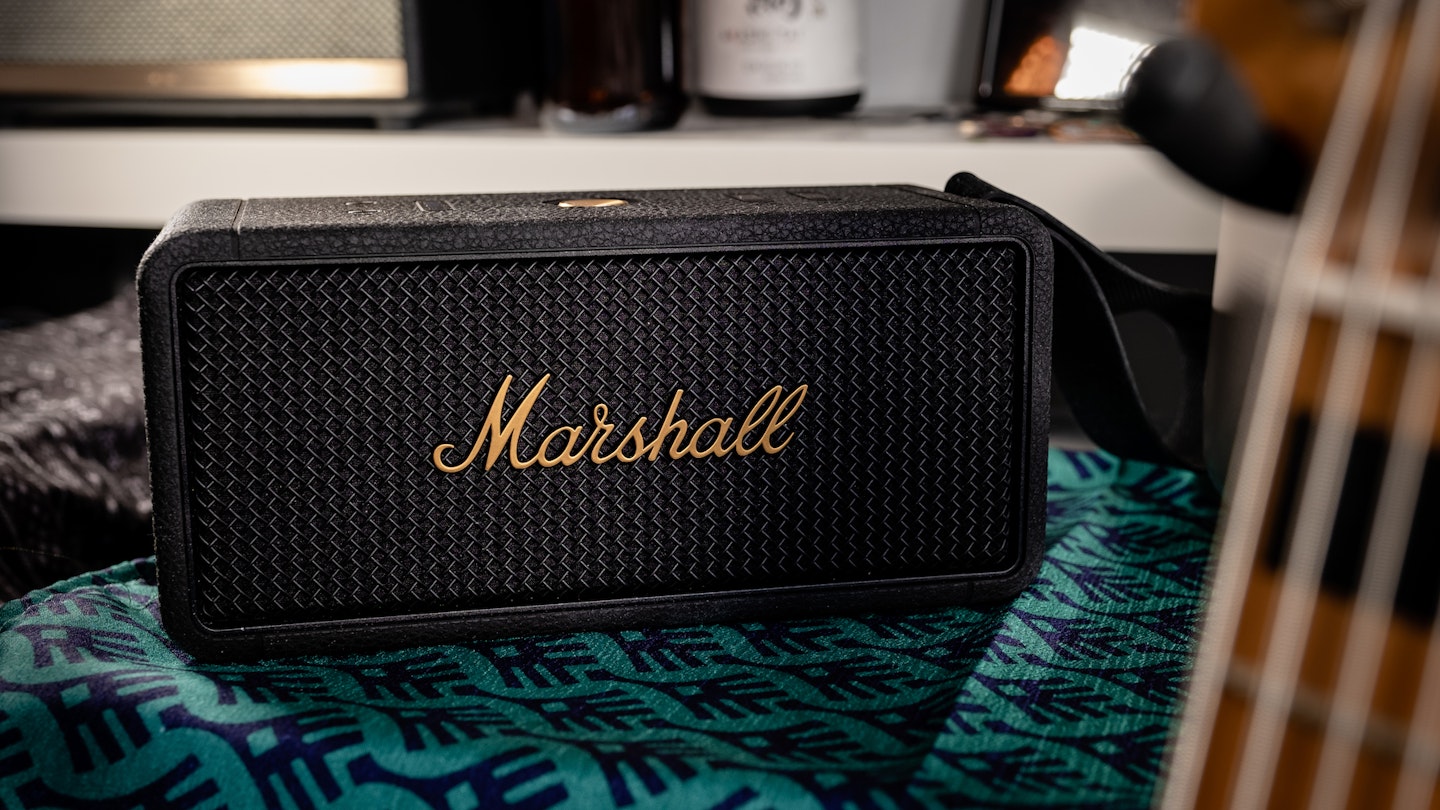In marketing materials, the Marshall Middleton finds itself heralded as the heaviest and loudest Bluetooth speaker around. A compelling claim and one that would place it among the best speakers around – so it's deserving of investigation.
Styled in that classic Marshall look and carrying a spec sheet in its back pocket that would make any audiophile blush, the Middleton is a promising specimen and potentially one of the best speakers you can buy on Amazon and elsewhere in 2023. With an extensive history of filling his office with speakers and testing anything audio that passes through the door, our Deputy Tech & Fitness Editor William Lobley was best placed to put Marshall’s latest through the wringer. Read on to see the results of his hands-on review.
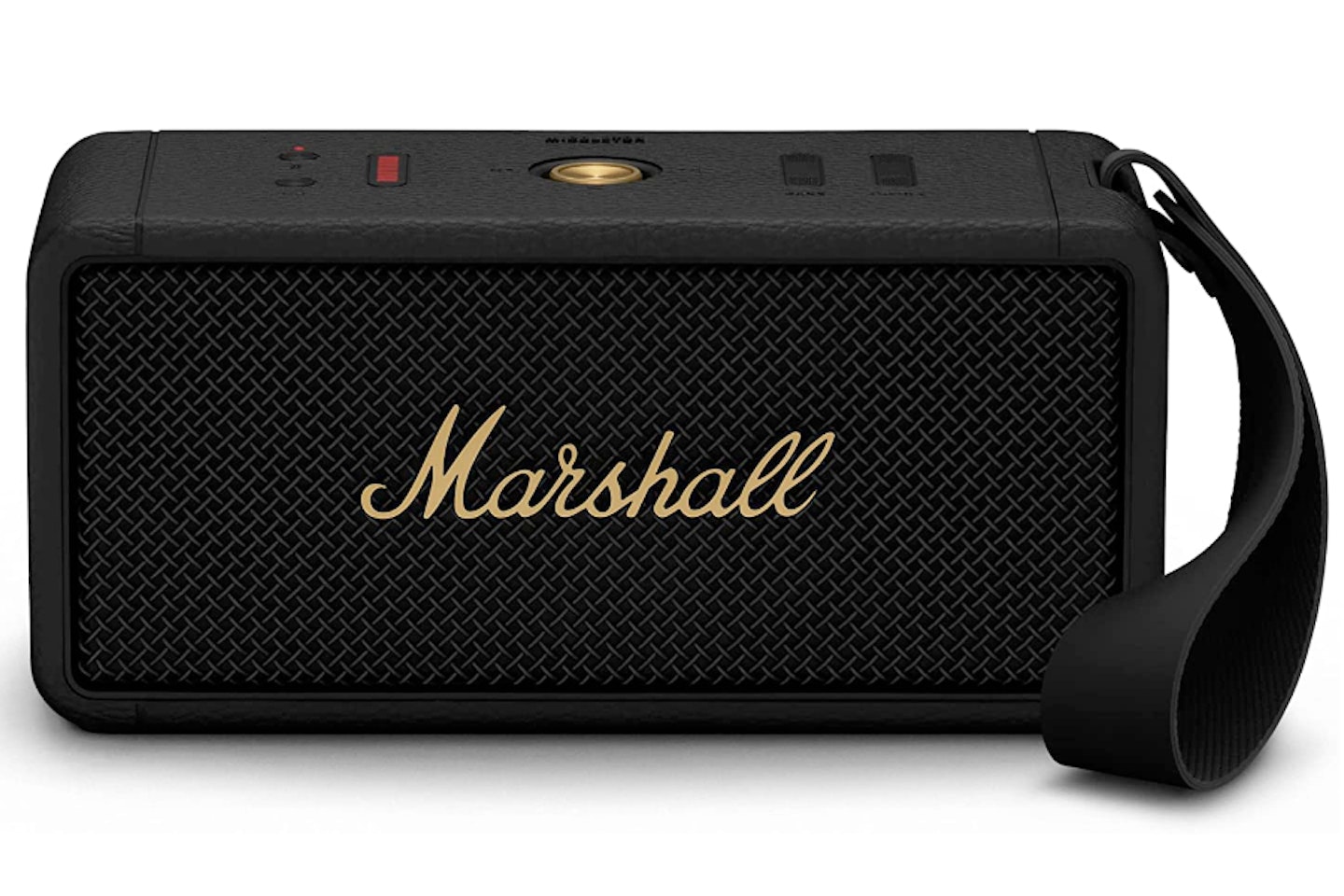 Marshall
MarshallPros
- Excellent, expansive sound
- Robust build and battery life
- Timeless design
Cons
- Too heavy to be super portable
| Drivers | 2x 3” 15W woofers, 2x 3/5” 10W tweeters, 2x passive radiators |
| Connections | Bluetooth 5.1, Aux-in |
| Charge | USB-C |
| Battery | 20+ hours |
| Weight | 1.8kg |
| Size | 109 x 230 x 95 mm |
| IP rating | IP67 |
- Available in Black and Brass, Cream
- Two 20 Watt Class D amplifiers for the woofers
- Two 10 Watt Class D amplifiers for the tweeters
- 20 minutes charge gives 2 hours of playtime
- Box Contents: Middleton speaker, detachable carry strap, user manual and legal and safety information, USB-A to USB-C charging cable
Pure rock fury - now in stereo

Sound performance
The Marshall Middleton is packing some serious audio heat. Carrying four speakers - two 3-inch 15W woofers and two 3/5-inch 10W tweeters - and a couple of passive radiators, it’s the most well-equipped portable Bluetooth speaker I’ve had my hands on. And when you get that Bluetooth connection fired up, it shows.
The Middleton sounds phenomenally good. It’s capable of handling light acoustic tracks delicately - First Aid Kit’s cover of “Running Up That Hill” is full of nuance, capturing the closeness and intricateness of the live session with grace. Turning to the louder side of life with Clutch and their classic “Pure Rock Fury”, the Middleton shoves and smashes through the rambunctious rock-and-roll riffage with style and flair. Splashy drums, rumbling bass lines, gravely vocals and screeching solos are all balanced out and full of, well, pure rock fury.
It’s not just anything under the ‘rock’ mantle that performs well here. Dance, electronic and bass-lead music are well served. The bass stabs that open the cheesy floor-filler “Rhythm Is A Dancer” from SNAP! are weighty without being overbearing. Similarly, the droning bass backing of “Turn On The Lights again..” by Fred Again.. can be heard and felt in equal measure, all while the rest of the song bounces and jibes over the top. Likewise on “Marea (we’ve lost dancing)”, also by Fred Again.., where ethereal synth moves above a more standard dance beat. Everything has its place, and the sound is all the better for it.
Without question, the Middleton is one the best bass-response speakers I’ve heard at this size. Like pretty much every speaker, breaking through into the very top reaches of volume does cut audio quality. But you won’t need to go that high - I was content around 4/10, cranking to 7/10 when the neighbours were out. It’s properly loud.

Feature: True Stereophonic
The secret to the audio success of the Middleton is down to three things. One, the quality of the speakers is top-notch - there is no bass blow-out or high-note distortions. The second is the onboard Bass and Treble controls, which allow you to modify the audio to suit your music and taste. Much like the Marshall Acton II I’ve tested before, while there’s no direct Middle control, Bass/Treble are all that you need - they keep things accessible. There's an app that you can download to improve EQ control, but I found that it didn't offer anything I couldn't so with the onboard controls, so uninstalled it after a week.
The third thing is that the Middleton is stereo. By being stereo, the Middleton isn’t trying to squeeze all of the audio from one place, meaning everything is given a bit more room to breathe. Marshall has reinforced the physical stereo split with something called ‘True Stereophonic’, which is some digital magic that creates a more 3D-style listening experience. This is a pretty nifty trick from Marshall, as the Middleton has a wide sound on it compared to the typical portable Bluetooth speakers. I would say that it’s even more successful than the 360-degree designs that brands are going for - though, 360-design does mean that anyone gathered around the speaker has the same audio experience - whereas with the Middleton it’s much more traditional - you’ve got to be in front of it to get the most from it.
Tour-ready build
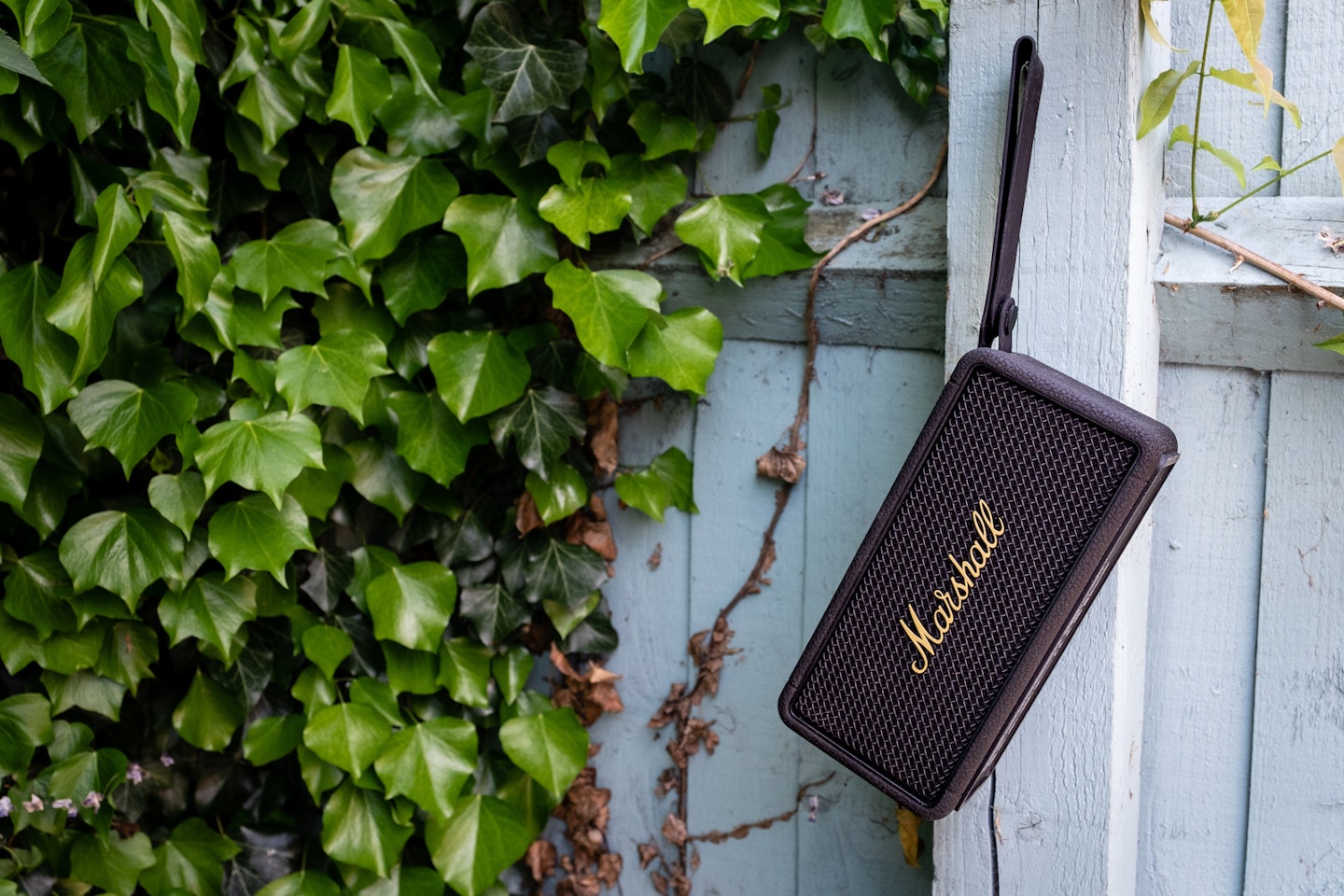
The build
The Marshall Middleton is one tough cookie, with a build that is sure to handle the most rugged of treatments. Solid as rock, I’d have no concern tossing this into a gig bag and carrying it around a tour of the continent. Further adding to its toughness is the IP67 rating, which means it’ll be safe from water and dust - so, it’ll be safe if you’re caught in a summer downpour or kept to hand on a sandy beach.
Inside, the Middleton is carrying a battery with enough charge to keep it running for 20-plus hours. This and the rubber carry handle mean that it was easy to take around the house with me, whether in the office, kitchen or garden. Like many USB-C equipped devices, the Middleton can charge in rapid time - 20 minutes hooked up to the mains provides two hours of playback, with a full top-up taking around 4.5 hours. Now, I didn’t get my stopwatch out, but my experience with this speaker tells me that these numbers are about right.
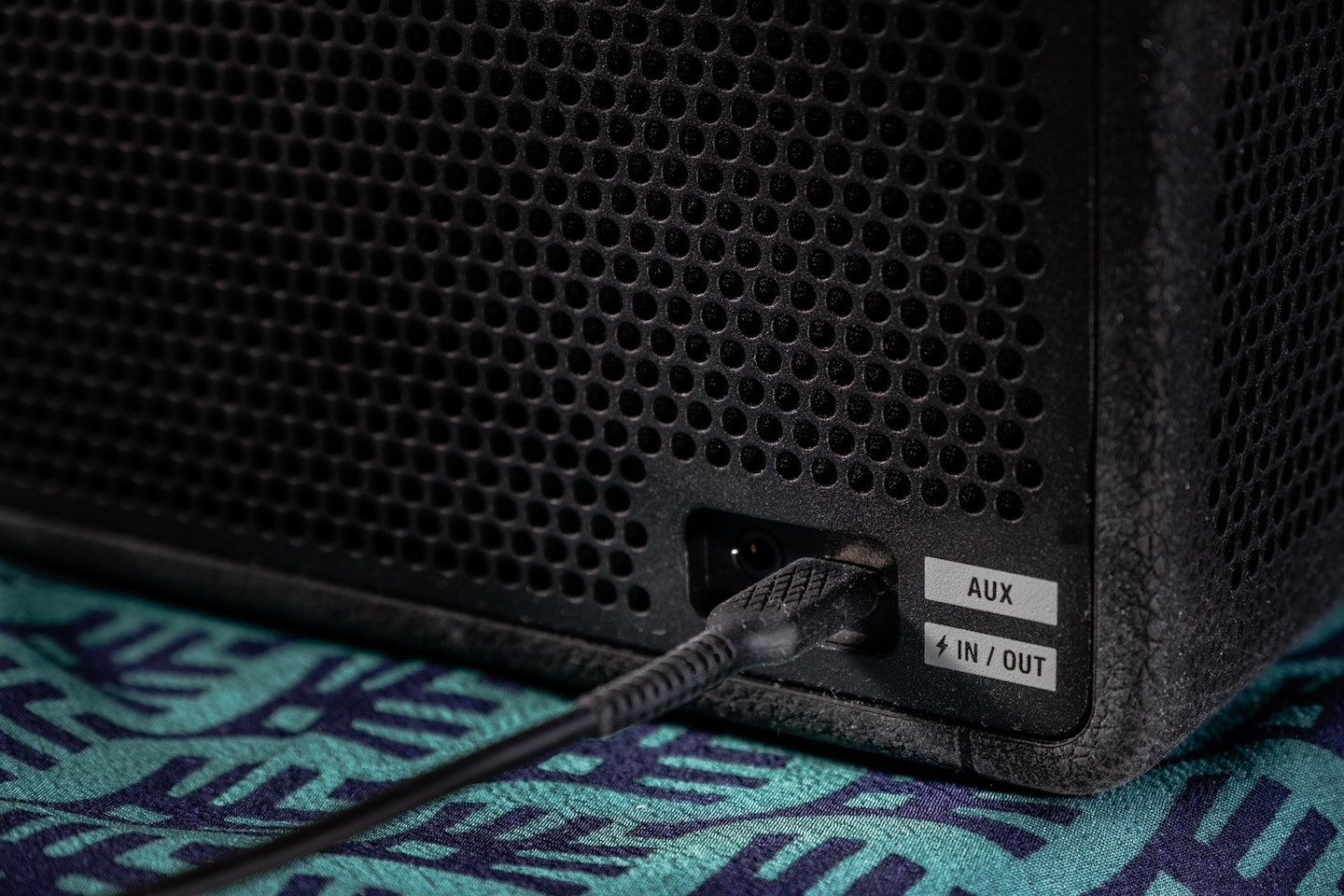
The controls
To turn the Middleton on, you press the circular control down for a few seconds - a guitar riff plays to let you know it’s booted, and another tone plays when a Bluetooth connection is made. It's a swift process, and neither my iPhone nor Mac had any issue finding and re-establishing the connection. Seamless.
The onboard controls are just as easy to use and quick to respond to. The machine metal control knob is accurate and tactile to use, pausing, skipping songs and controlling volume well. Subdued in the name of aesthetics, the top of the Middleton also hosts the Bass and Treble controls, connection controls, and LED panel (which depending on the action displays battery life, or the level of volume, or bass and treble).
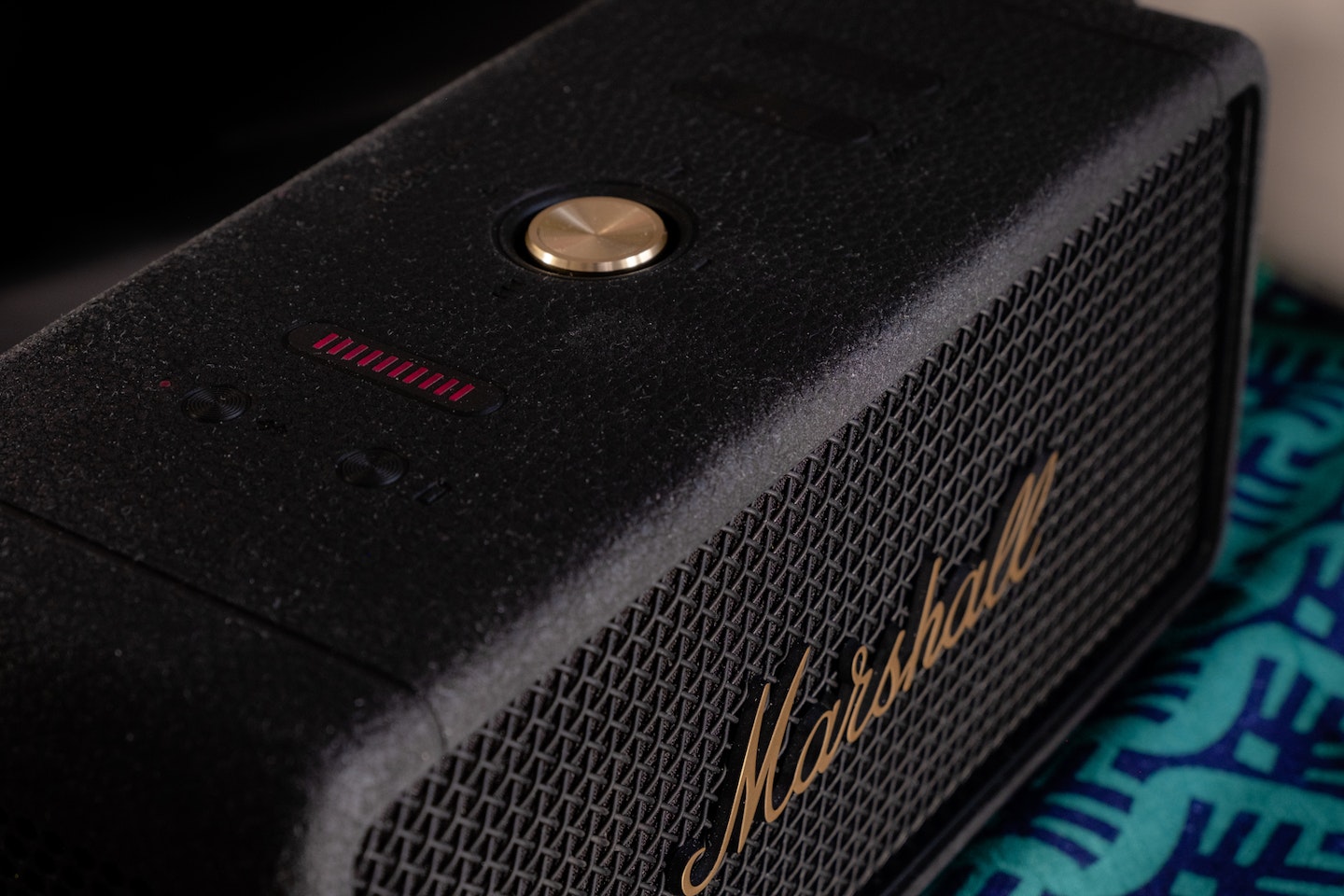
I was lucky enough to be in a position to take advantage of all of the above when I spent a few days driving a van with only an FM radio. I tucked the Middleton securely in the overhead van cubby (you don’t want a 1.8kg brick flying around the cab should the worst happen), tweaked the EQ to balance out the loud booming bass caused by the storage, and away I went. To control the music, all I needed to do was reach up and flick the control. It was superb. I didn’t have to worry about charging, as I knew that I would have plenty of battery spare.
A nice little bonus for those of us who are conscious of eco concerns, Marshall has incorporated some recycled plastics into the build. Making up 55% of the plastic in the building, plastic bottles and automotive light covers have never sounded so good.
Any downsides?
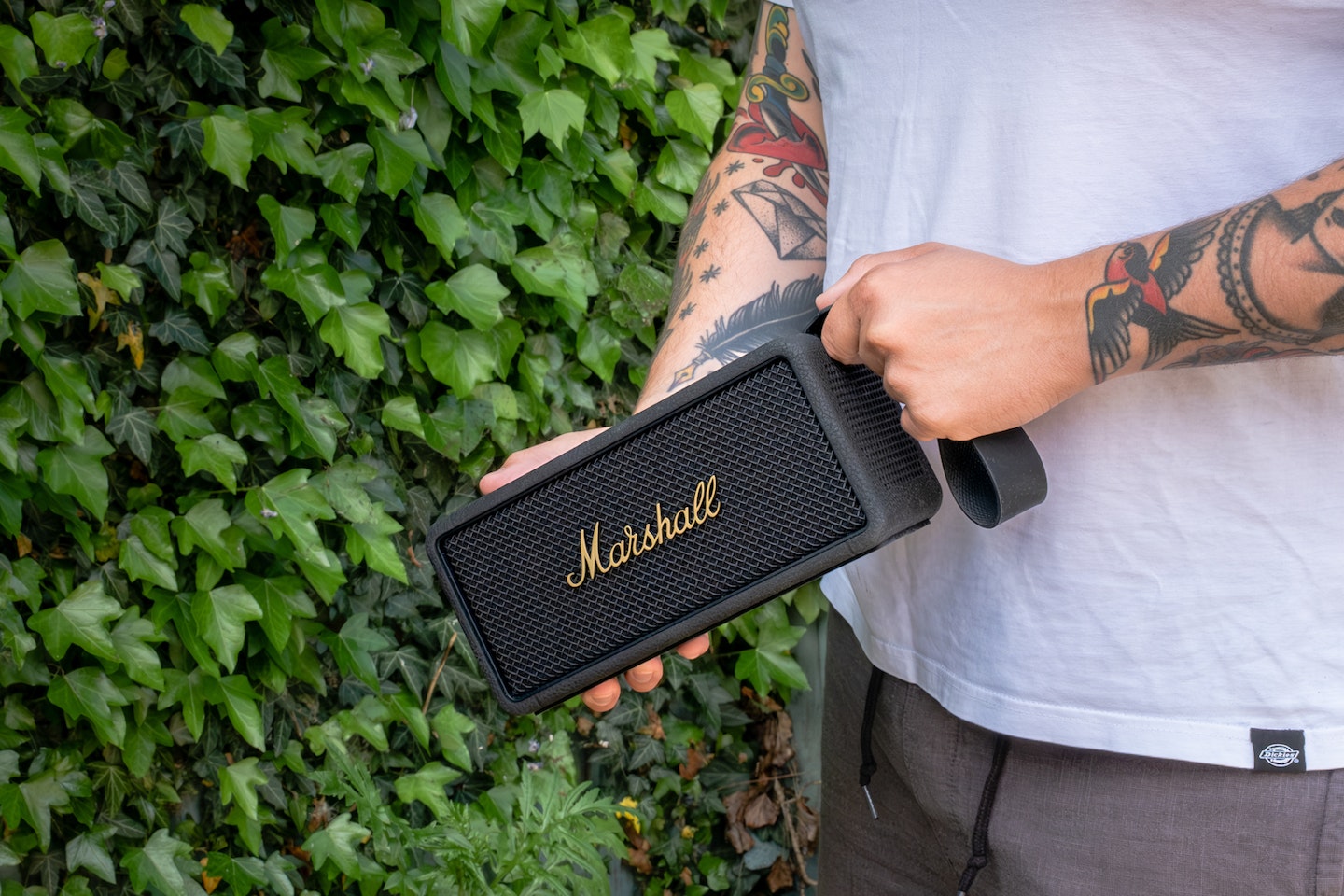
There’s only one downside to the Middleton, and it's more a matter of semantics. In short, I’m hesitant to buy into its portability. It’s battery-powered and can be carried around the house easily - but it weighs 1.8kg. If you’re looking for a portable speaker to throw in a backpack and carry around all day, this isn’t the one - it’s too heavy. It’s portable, but it’s not that portable.
Price and competition
The Marshall Middleton RRP sits at £269.99 - or what I would consider being the high end of the portable Bluetooth speaker market. For this price, the Middleton is competing with general home-use speakers. Luckily, it does have the power and audio finesse to compete with such items, including Marshall’s own Acton II.
Outside of Marshall’s catalogue, the Middleton is putting itself into consideration alongside the Audio Pro T3 I’ve also reviewed. Here, you’ll be saving about £70 with the Audio Pro T3, which has a beautiful sound to it, but you will be losing out on a little power and bass impact found with the Middleton. Others looking for a portable speaker may also be drawn to the Sonos Roam or Ultimate Ears BOOM, which are both considerably cheaper but less audibly exciting.
Something else you get with the Middleton, which is more or less absent with most portable speakers - bar anything from Audio Pro - is a keen eye for aesthetics, with the styling being very refined and pretty timeless.
Verdict
The Marshall Middleton Bluetooth speaker lives up to its claims of being the heaviest and loudest portable speaker on the market. Packed with four high-quality speakers, including both woofers and tweeters, it delivers exceptional sound quality with impressive bass response. The Middleton's stereo configuration and True Stereophonic technology create a spacious and immersive listening experience. Being priced at £269.99, it competes with general home speakers, but its performance justifies the higher price point.
Offering convenient controls, the Middleton has a long battery life, and quick charging via USB-C. However, if you’re looking for something uber-portable, its weight of 1.8kg may limit how much you want to carry the speaker around when compared to lighter options on the market.
One standout feature of the Middleton is its refined and timeless design, which sets it apart from many other portable speakers. Overall, if you prioritise exceptional audio performance and are willing to compromise on portability, the Marshall Middleton is an excellent choice among Bluetooth speakers in 2023.
Shop this product
More items to consider
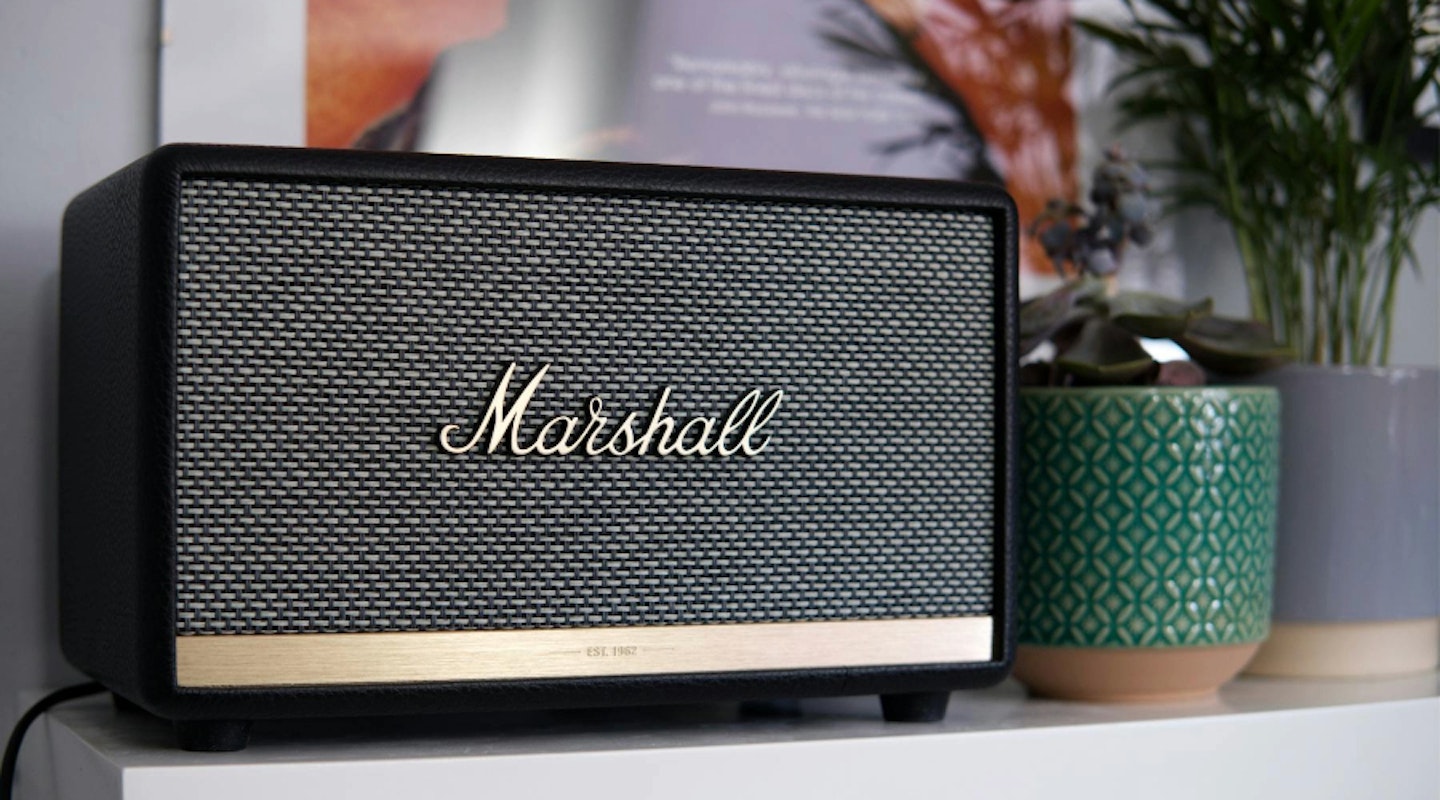 William Austin-Lobley/WTB
William Austin-Lobley/WTBIf you're not wedded to the portability of the Middleton and would like to save a little money, the Acton II gives a great audio experience and carries those classy Marshall looks. It's mains powered and features a beautiful audio performance with adjustable EQ.
Read our full Marshall Acton II review.
Pros
- Marshall sound
- Marshall looks
Cons
- Not portable
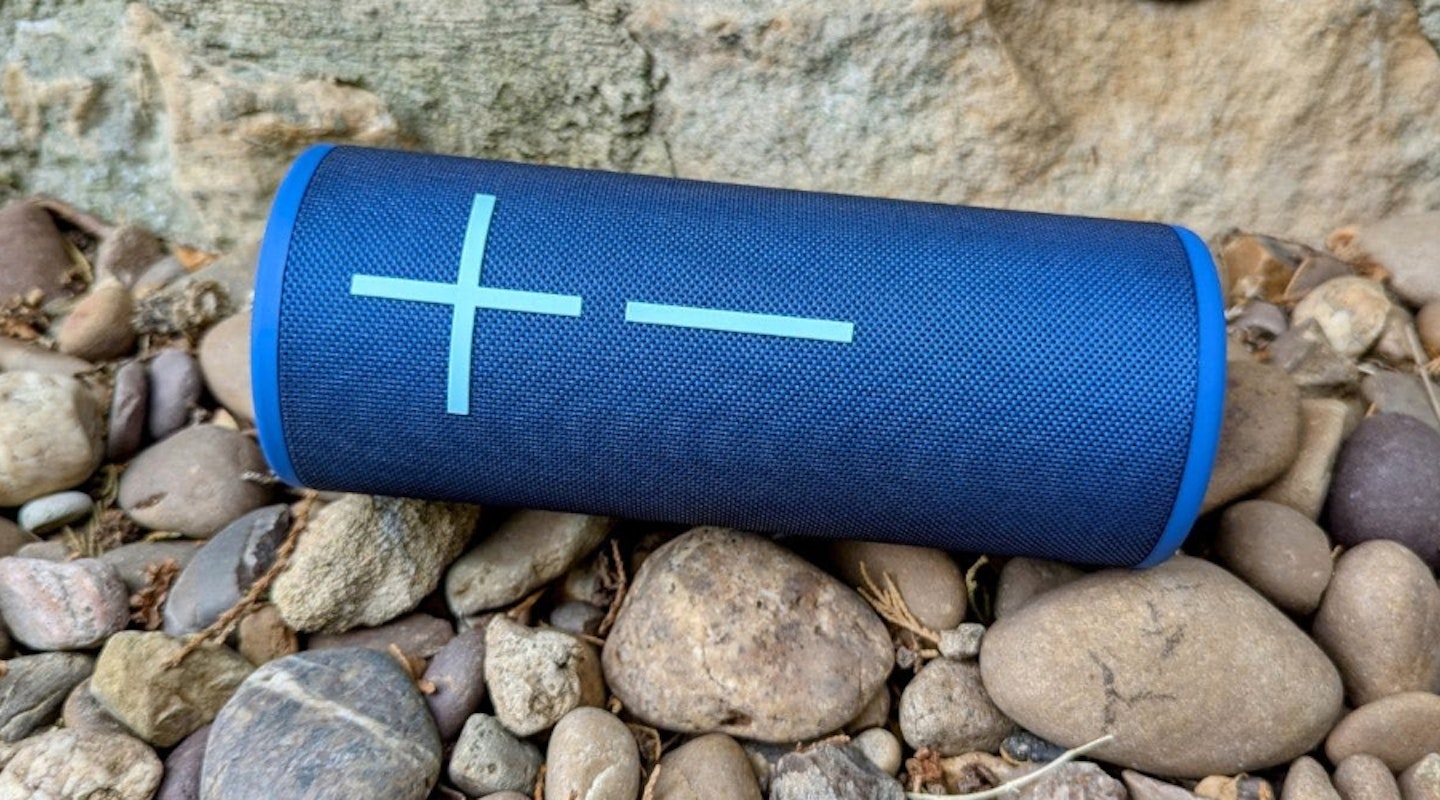 What's The Best/Steven Shaw
What's The Best/Steven Shawredirect.viglink.com
If your preference is portability over audio, then the BOOM 4 is a compelling alternative. Though the sound isn't as refined as the Middleton, you'll get tons of bass and volume which will be great for adding a vibe to any barbecue or outdoor HIIT session.
Read our full Ultimate Ears Boom 4 review.
Pros
- Cheaper than the Middleton
- Bassy
- Tough
Cons
- So-so design
- Audio less refined than Marshall
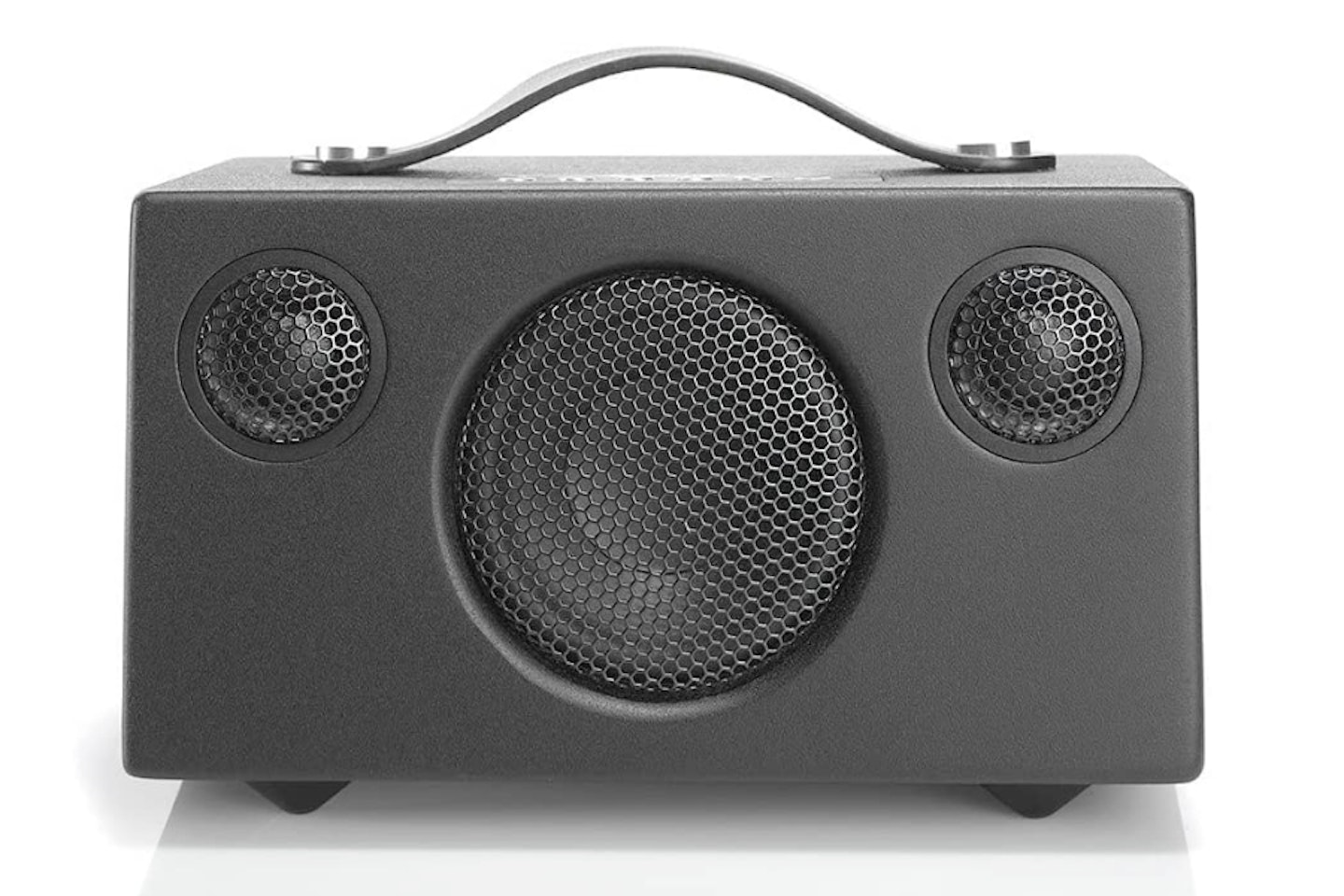
Though a few years old, the Audio Pro T3 has a lot to love. Its sound is refined and accurate, with a lovely balance between all the frequencies. It's got a decent battery life, and the design is pure Scandi.
Pros
- Refined sound
- Cool design
Cons
- Sound isn't as fun as the Middleton
Who tested it?
William Lobley is our Deputy Tech & Fitness Editor. A fan of music from a young age, he plays guitar, bass and drums, has studied Music Technology and owns an ever-growing record collection. His love of music extends to all-things-audio, and he has extensive experience reviewing speakers, headphones and earbuds.
How we tested it
I tested the Marshall Middleton over several weeks. Most of the time, the speaker was used in my office throughout the day to listen to music while I worked. It was also used in the kitchen to soundtrack cooking, and in the garden on evenings and weekends. It was used for two days while driving in a van, tucked in the overhead compartment.
Most of the music listened to was guitar-led and spanned from jazz and heavy metal. Electronic and dance music was also played, especially at loud volumes. Podcasts were featured to test the performance of the speaker with spoken word.
